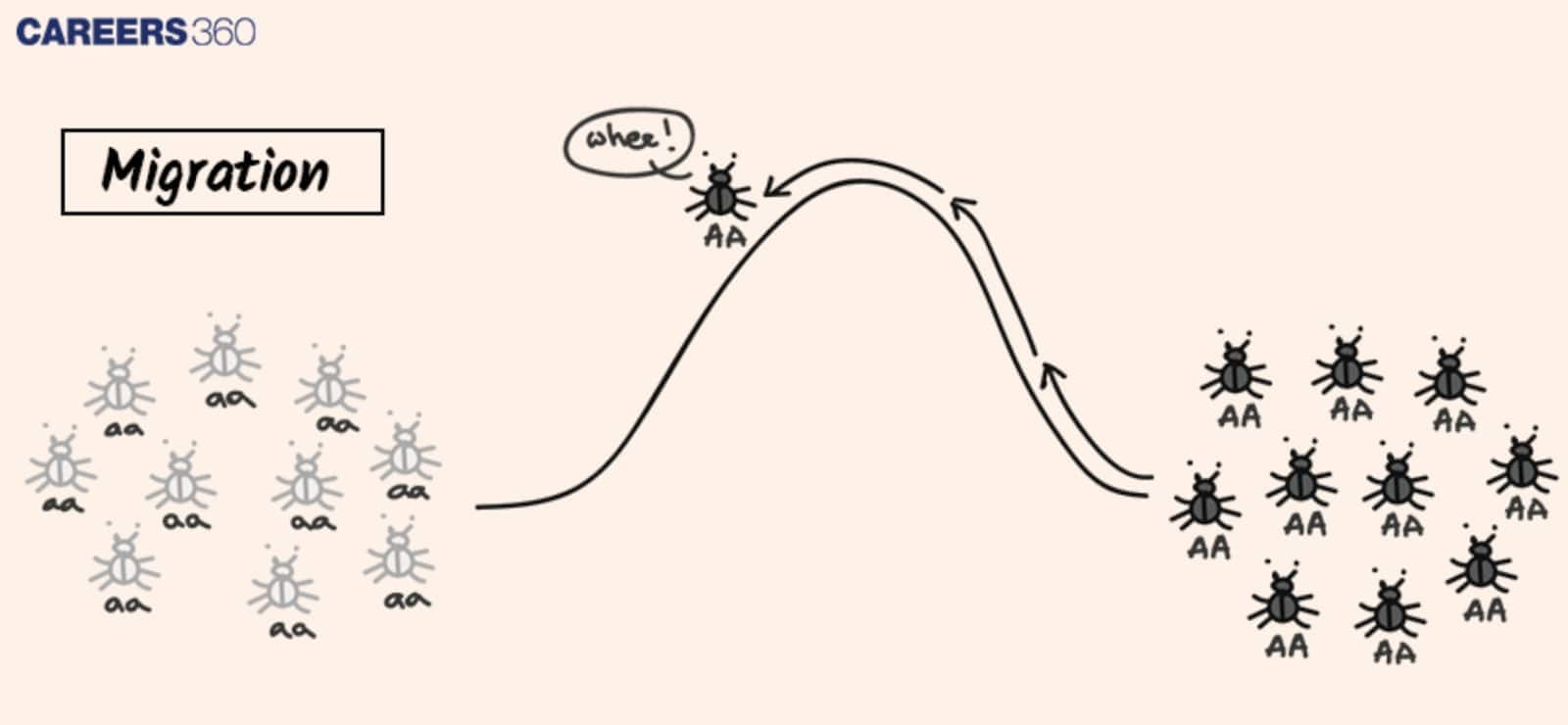Biological Evolution: Definition, Types and Examples
Biological evolution refers to the gradual changes in organisms over the period of time. It explains how simple forms are developed into the complex diversity we see today. These changes occur due to variations in genetic material inherited from one generation to another. Darwin’s theory of natural selection provides the foundation for understanding evolution and how variations occur in population over time.
This Story also Contains
- What Is Biological Evolution?
- Key Concepts In Evolution
- Mechanisms Of Evolution
- Evidence of Evolution
- Patterns Of Evolution
- Speciation
- Human Evolution
- Evolution In Action
- Controversies And Misconceptions of Biological Evolution
- Recommended video for "Biological Evolution"
- MCQs on Biological Evolution
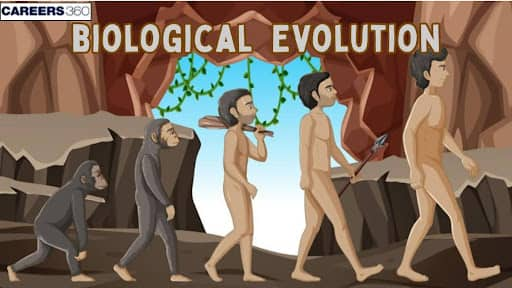
Biological evolution helps us trace the common ancestors of organisms and understand how species adapt to their changing environments. It plays a crucial role in the molecular basis of inheritance by explaining how genes are inherited and evolved. It helps scientists trace evolutionary relationships, improve crop varieties, and develop drugs to treat diseases.
What Is Biological Evolution?
The real picture of millions of years of evolution is visible in every animal. The beauty of the survival that takes place in the mutual interaction of different organisms is a representation of biological evolution. It is the process through which species of organisms diversify from their forefathers over time. It explains how the richness of life on Earth and how species adapt to different environments.
For example, the bright colours of a butterfly's wings, matched to the flowers in which it lives, or the streamlined shape of a fish allows it to move through the water with a minimum of friction. These are not events of chance but are all the products of evolution by stages. Biological evolution explains these adaptations as well as the evolutionary history by which they arise in many different species.
Key Concepts In Evolution
Evolution explains how organisms change over time. It helps us understand the origin of species and their adaptation to the environment. The process involves gradual changes in traits that are inherited over the generations. These are the key concepts which form the foundation of evolution:
Natural Selection
The process of natural selection involves differential survivability and reproduction by individuals bearing favourable traits. Hence, evolution by natural selection favours those traits in organisms that further survival and potential for increased reproduction. For example, one of the classical examples of natural selection at work is the evolution of colour to turn peppered moths black on soot-covered trees in industrial England.
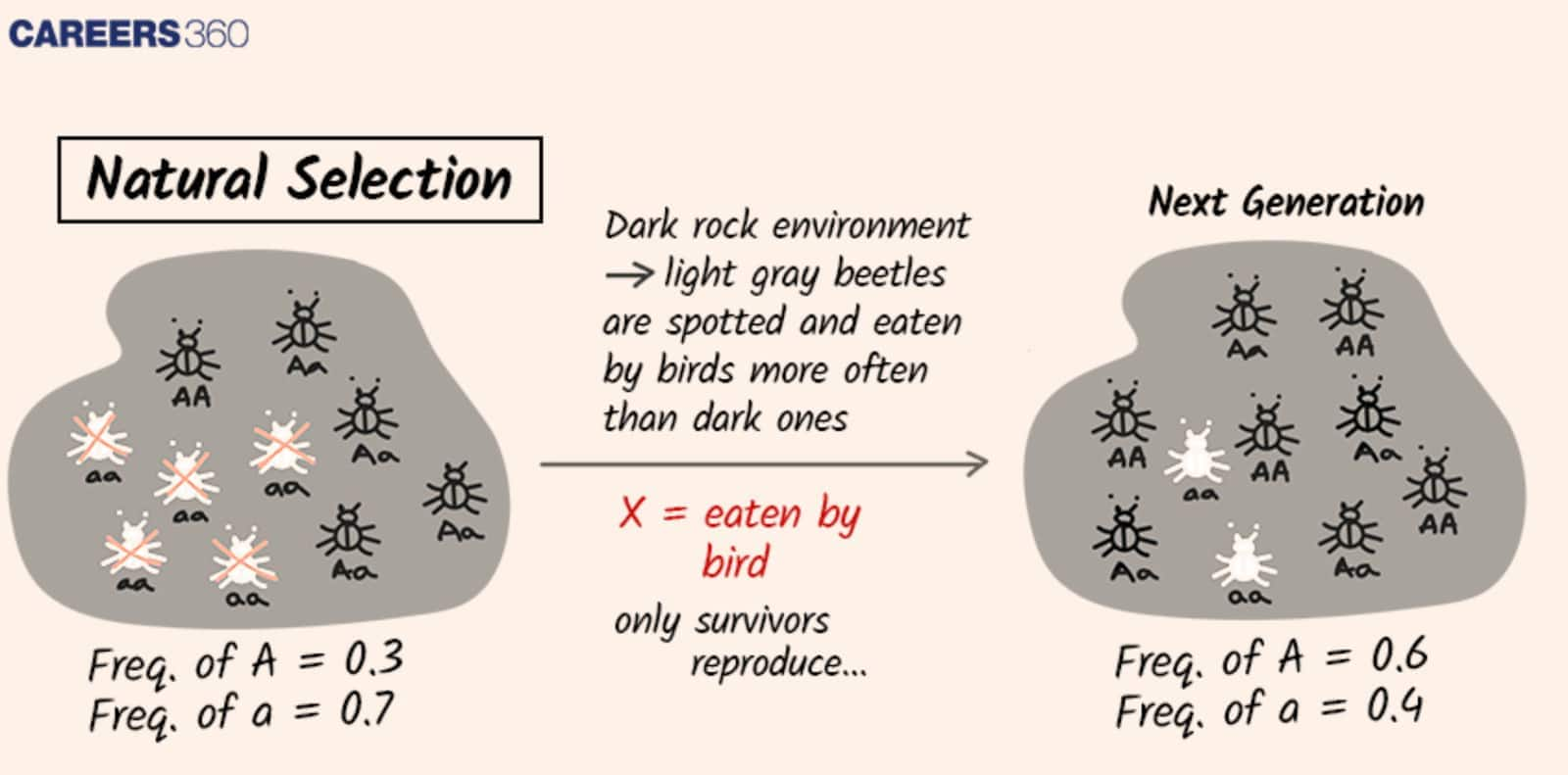
Development From Genetic Variation
Genetic variation is the raw material for evolution. It arises from mutations, recombination during sexual reproduction, and gene flow between populations. These variations supply the diversity acted upon by natural selection. Without genetic variation, a population of a species cannot adapt to changing environments, putting it at risk of extinction.
Mechanisms Of Evolution
Evolution occurs through several key mechanisms that bring changes in the genetic material of the population over time. The mechanisms of evolution include mutation, natural selection, genetic drift, gene flow, recombination, and speciation. Together these processes contribute to diversity of species. Some of the mechanisms are explained below:
Genetic Drift
Genetic drift refers to the changes in the frequency of alleles in a population occurring by chance.
In small populations, this may lead to significant evolutionary changes. Two examples of genetic drift are the bottleneck effect and the founder effect.
The bottleneck effect means that, due to an event, the population suddenly decreases and genetic diversity is lost.
The founder effect refers to when a small group of individuals starts another population that has only some of the variation of the parent population.
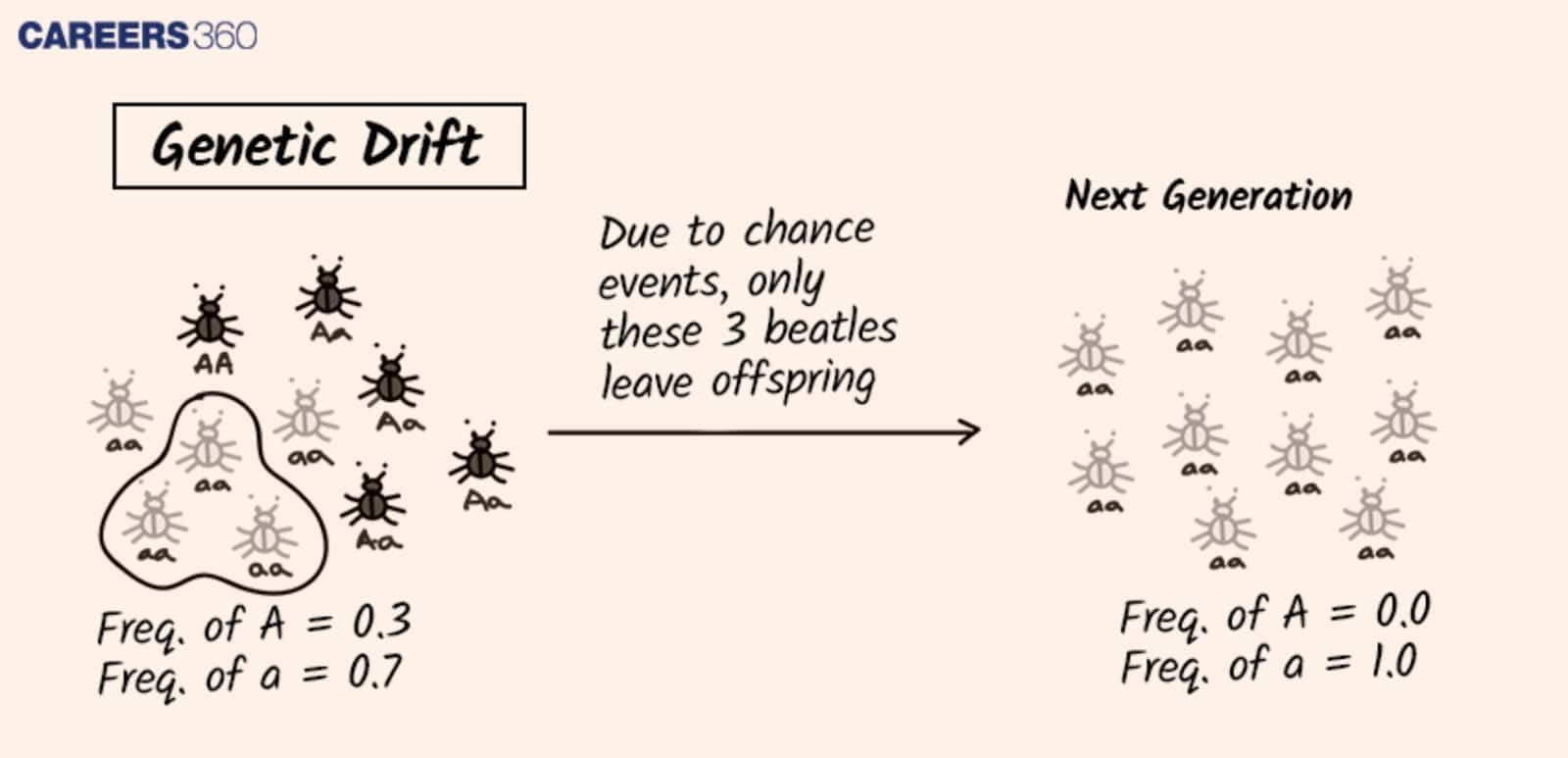
Gene Flow (Migration)
Gene flow is the exchange of genes between populations, usually increasing variation within a population.
Since it can homogenise populations, it will reduce or prevent speciation.
Diagrams of gene flow between populations
Mutation
Genetic mutations are changes in the sequence of DNA, introducing new variations in the genes and can be beneficial, neutral, or deleterious.
For example, a mutation in the gene CCR5 confers resistance to HIV; this point is an excellent example of a positive mutation.
Harmful mutations, such as those causing genetic disorders, show the possible negative consequences.
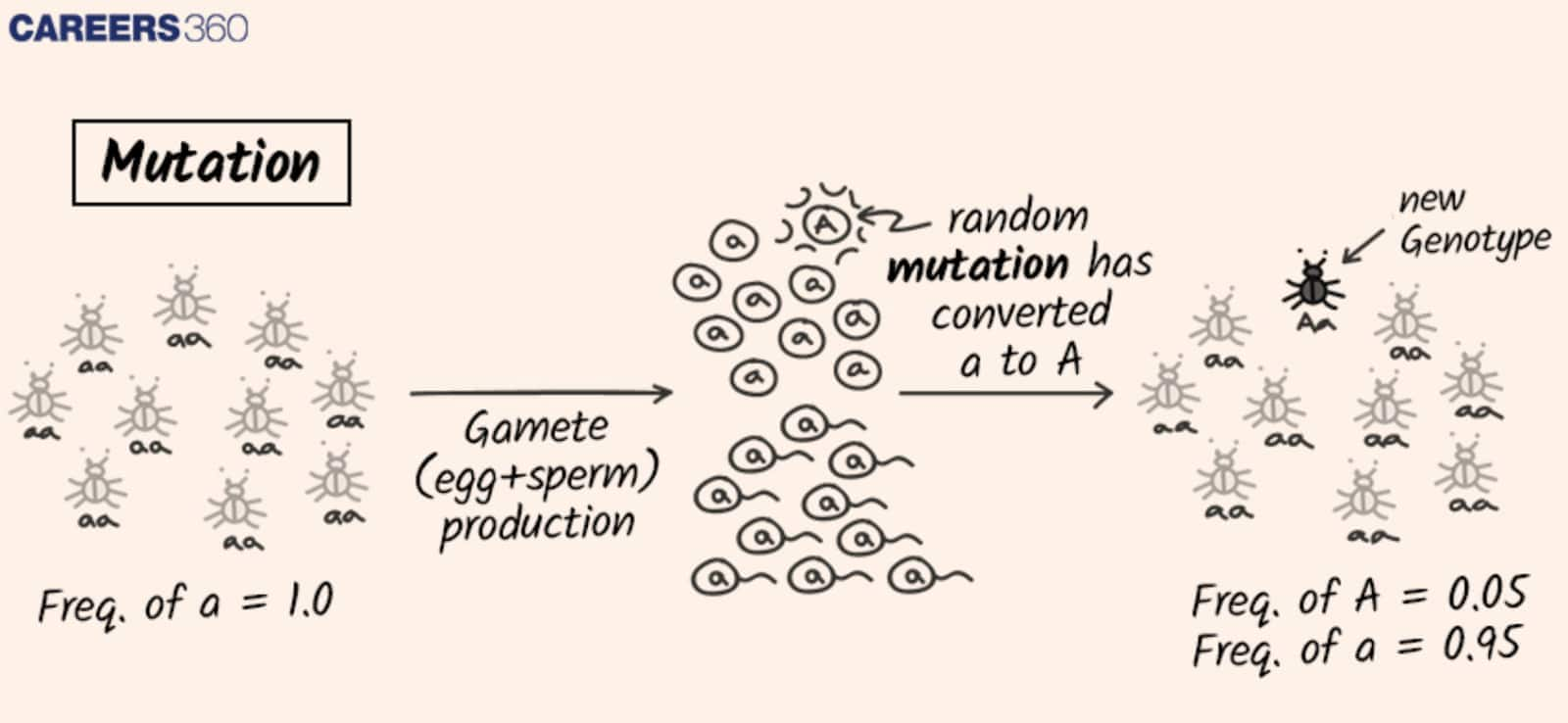
Recombination
This is the process through which genetic recombination between chromosomes happens as a result of gene shuffling during sexual reproduction, forming genetic diversity.
This creates a different combination of alleles hence there is increased genetic variation and more adaptation possibilities.
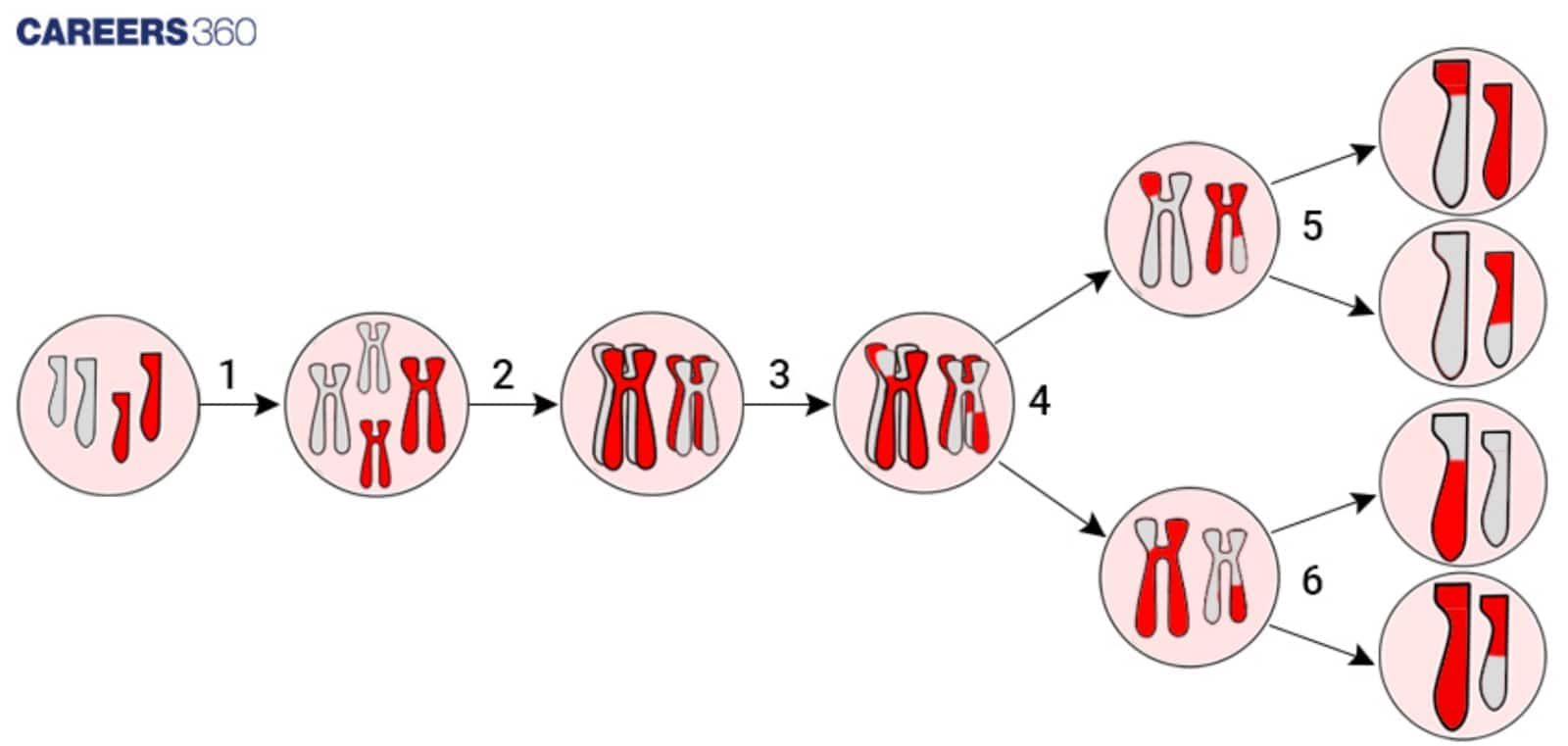
Evidence of Evolution
Evidence of evolution supports the gradual changes in species. The observations confirm that all living organisms share a common ancestry and have diversified. These include fossil records, anatomical similarities, and molecular evidence. They are the evidence of evolution are explained below:
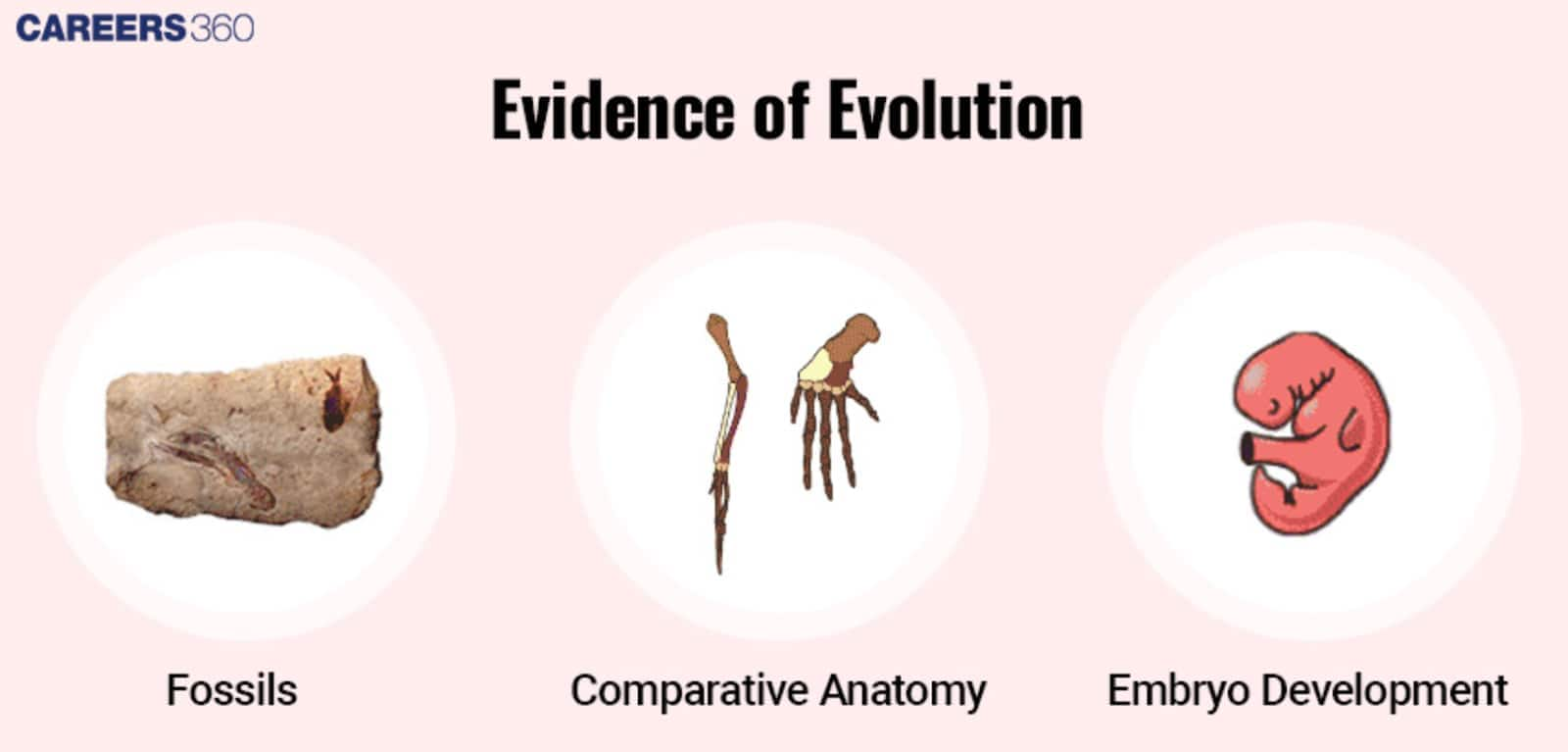
Fossil Record
The fossil record, being a record of life on Earth, exhibits species' progressive development over millions of years. When organisms are buried by sediment, their remains get conserved, thereby forming fossils. Transitional fossils, like Archaeopteryx, demonstrate the evolutionary links between groups, such as birds and reptiles.
Comparative Anatomy
Comparative anatomy studies the resemblances and distinctions of different organisms concerning structure. Homologous structures, such as the limbs of mammals, give evidence of common ancestry. Analogous structures, such as the wings of bats and insects, indicate convergent evolution. Vestigial structures, as in humans, still show signs of evolutionary history.
Molecular Biology
Molecular biology provides useful genetic evidence for evolution. Similarities and differences in DNA and protein sequences of different species show evolutionary relationships. Phylogenetic trees and the methods established for estimating the timing of evolutionary events, such as molecular clocks, are useful in tracing lineages. Biogeography shows
Biogeography
The study of the distribution of species across the globe. It provides evidence for evolution through patterns of species distribution. For example, adaptive radiation occurs when a single species evolves into several different species that occupy different ecological niches.
Patterns Of Evolution
The patterns of evolution describe the trend in which species evolve over time. These patterns help to understand how biodiversity has formed and changed in different environments. Patterns of evolution include divergent evolution, convergent evolution, parallel evolution, and co-evolution.
Divergent Evolution
Divergent evolution is when related species obtain different traits—for instance, because of different environments or ecological niches. For example, divergence for species, like the Galapagos finches.
Convergent Evolution
Convergent evolution occurs whenever unrelated species develop similar features as a result of similar environmental pressure. Such an example includes the wings of bats and birds. Examples of convergent evolution show how, from divergence, two species could evolve similar adaptations.
Coevolution
When two or more species influence each other's evolution, the process undertaken is known as coevolution. This is brought about by the interaction between the species, such as predator-prey or pollinator-plant relationships. An example is that of bees and flowers, the plants and the bees would have developed characteristics or traits favouring their interaction.
Parallel Evolution
Parallel evolution is the development of similar traits in two related but distinct species. They often share similar environments. Unlike convergent evolution, the species in parallel evolution share a common ancestor. For example, marsupial mammals and placental mammals have evolved similar adaptations for gliding, despite being from different groups.
Speciation
Speciation is the process through which new species are formed. It occurs when populations of the same species become isolated. It plays a major role in generating biodiversity on Earth. Over time, it leads to the formation of distinct groups with unique features.
Definition And Types Of Speciation
Speciation is the formation of new species from pre-existing species. It is a process in which species are evolved by modifications in the genetic material. There are various forms of speciation:
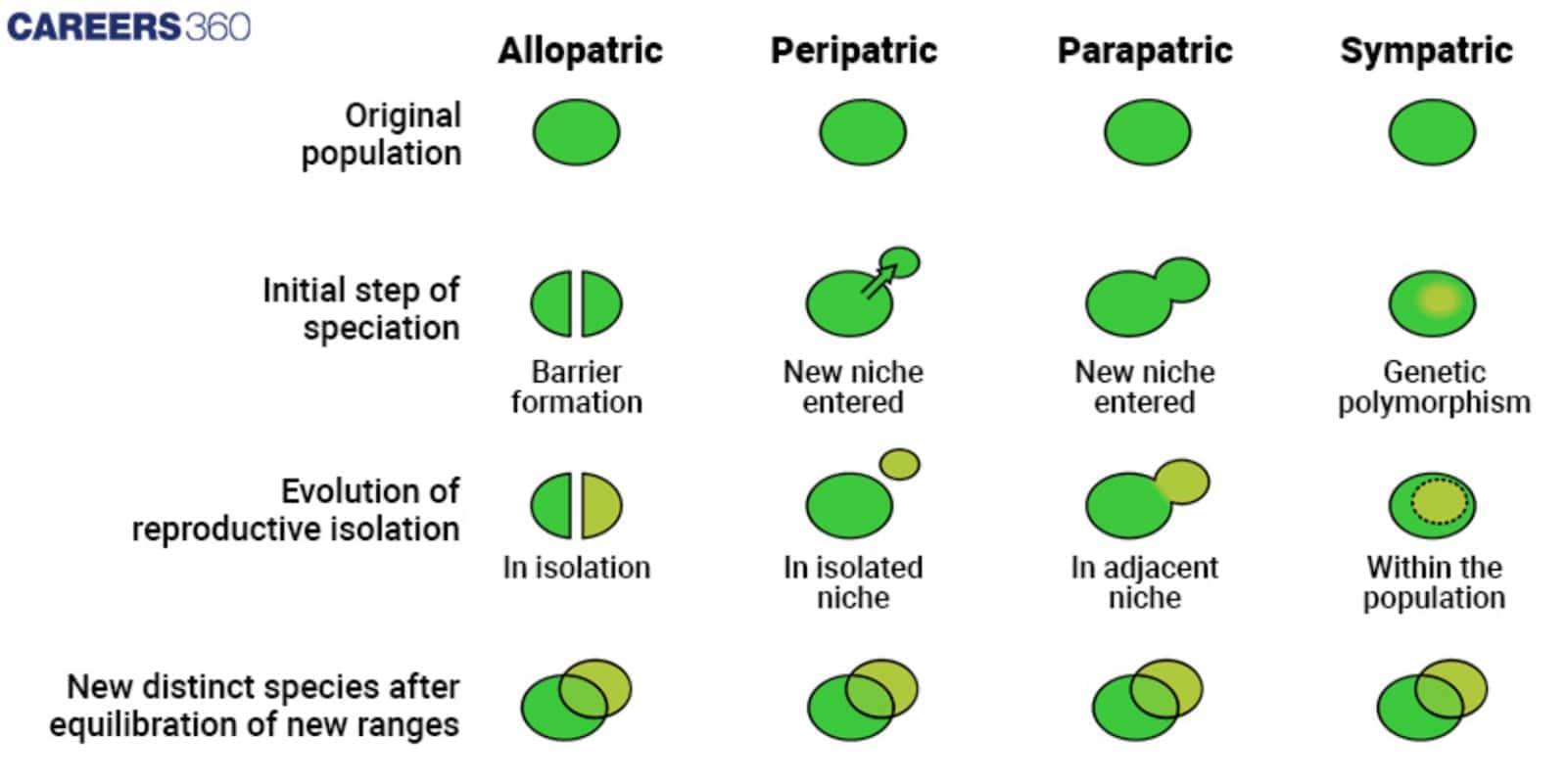
Types of Speciation | Description |
Allopatric Speciation | This occurs when populations are geographically discontinuous in distribution and normally leads to reproductive isolation. |
Sympatric Speciation | It is a process happening in the same area of geography, normally by ecological or behavioural differences. |
Peripatric Speciation | Speciation thereof happens; a small population is isolated at the edge of the distribution of a larger population |
Parapatric Speciation | The process through which adjacent populations evolve distinct species while in contact along a common border. |
Human Evolution
Origin and evolution of man is a long process from which modern humans developed from primates over millions of years. It involves gradual changes such as, upright walking, increased brain size, reduced body hair, and so on. The summary of the human evolution is as follows:
Timeline Of Human Evolution
The timeline of human evolution allows us to trace our genealogy from early hominids right up to modern man, now known as Homo sapiens.
Large hominid species such as Australopithecus, Homo habilis, and Homo erectus each had major inputs into our evolutionary history.
Genetic Evidence And Archaeological Findings
DNA analysis and other genetic evidence have verified the relationships of modern humans with our ancestors. The tools, fossils, and other such artefacts are evidence from archaeology that embody a host of inferences about early human behaviour, culture, and environment.
Evolution In Action
Evolution in action refers to the observable chnages occurring in organisms. It can be seen in antibiotic resistance in bacteria, industrial melanism and many more. These examples demonstrate how species adapt to their changing environment. Evolution in action could be seen through many examples such as:
Antibiotic Resistance in Bacteria: In the course of treatment, medicine faces the problem that bacteria develop resistance to antibiotics by mutations and natural selection.
Industrial Melanism: Colour change was caused by the Industrial Revolution-induced pollution undergone by the peppered moth. This process has been often cited as a striking example of natural selection.
Evolution of New Species Observed: Several cases have been documented, in various organisms, regarding the process of formation of new species; this is direct evidence for speciation.
Controversies And Misconceptions of Biological Evolution
The theory of biological evolution, despite having success, often faces controversies due to misunderstandings or religious beliefs. These misconceptions often arise due to lack of scientific literacy, hence it is important to educate students on accurate evolutionary principles. Clarifying these misconceptions helps in better understanding of biological evolution. Following are some common controversies and misconceptions of biological evolution:
Humans evolved from monkeys: Humans and monkeys share a common ancestor but evolved on separate branches of the evolutionary tree. Evolution does not show linear progression, a straight line from one species to another.
Evolution is just a guess: In science, a theory is not a guess but a well-supported explanation with evidence. The theory of biological evolution is supported by fossil records, genetics, and observations of natural selection.
Conflict with religious beliefs: Some reject evolution due to religious views about creation.
Social and ethical implications: This misconception arises when discussing the origin of man and the genetic contribution to behaviour. These topics should be handled carefully, keeping in mind that there are diverse beliefs.
Recommended video for "Biological Evolution"
MCQs on Biological Evolution
Q1. Flying phalanger and flying squirrel show all of the following except
Convergent evolution
Adaptive convergence
Analogy
Adaptive radiation
Correct answer: 4) Adaptive radiation
Explanation:
When more than one adaptive radiation appeared to have occurred in an isolated geographical area (different habitats), one can call this convergent evolution.
Both flying phalanger and flying squirrel are capable of gliding, but they are not related directly. They represent an example of convergent evolution where different species evolve similar traits due to similar environmental pressures, not because they share a common ancestor with that trait.
Hence, the correct answer is Option 4) Adaptive radiation.
Q2. What is the name given by Oparin to the larger and denser colloidal systems formed by the aggregation of microspheres carrying opposite electrical charges?
Microsphere
Coacervate
Protovirus
Enzyme
Correct answer: 2) Coacervate
Explanation:
The name given by Oparin to the larger and denser colloidal systems formed by the aggregation of microspheres carrying opposite electrical charges is "coacervate." Coacervates provided an environment for various reactions and could grow in size by absorbing substances dissolved in water. They were an important step in the formation of life on Earth, as they created diversity amongst themselves and allowed for the possibility of more complex structures to develop.
Hence the correct answer is Option 2) Coacervate.
Q3. What was necessary for the gene aggregates to develop into cells?
The formation of enzymes
The aggregation of nucleotides and proteins
The presence of a nucleus
The ability to produce ATP
Correct answer: 1) The formation of enzymes
Explanation:
The gene aggregates needed to create enzymes before they could transform into anything resembling a cell. It takes enzymes to catalyze the different chemical processes that take place inside of cells. Conditions were now favourable for the development of the cell due to the steady synthesis of enzymes. The initial cell lacked a nucleus, was very basic, and resembled a bacterial cell. Therefore, the development of cells from gene aggregates required the presence of enzymes at every stage.
Hence, the correct answer is Option 1) The formation of enzymes.
Also Read:
Frequently Asked Questions (FAQs)
Mutations are changes in the DNA that create genetic variation. These variations can lead to new traits, some of which are beneficial in survival. Over time, beneficial mutations may become more common, helping in the process of evolution.
The main mechanisms include natural selection, genetic drift, gene flow, and mutation.
Charles Darwin first explained biological evolution through his theory of natural selection.
Biological evolution is the gradual change in the characteristics of a population over generations.
The four types are divergent evolution, convergent evolution, parallel evolution, and co-evolution.
